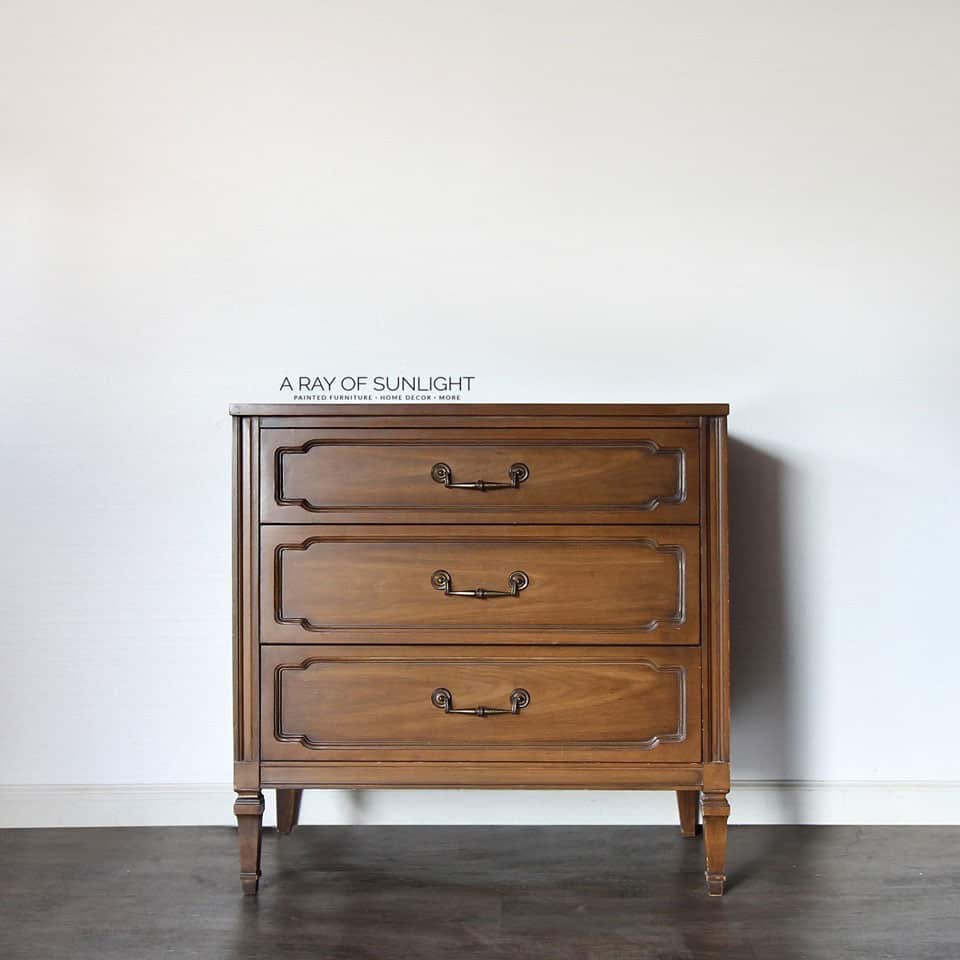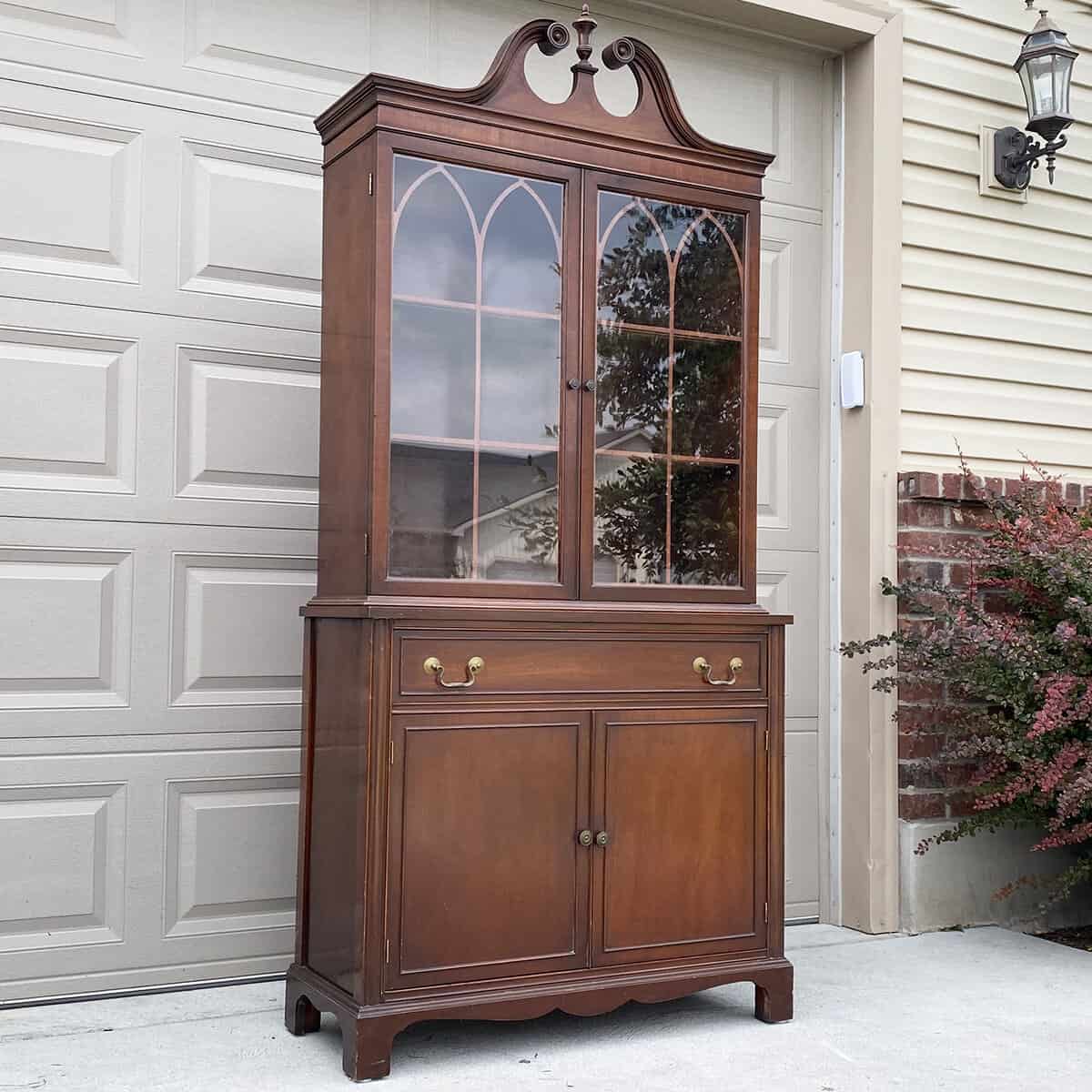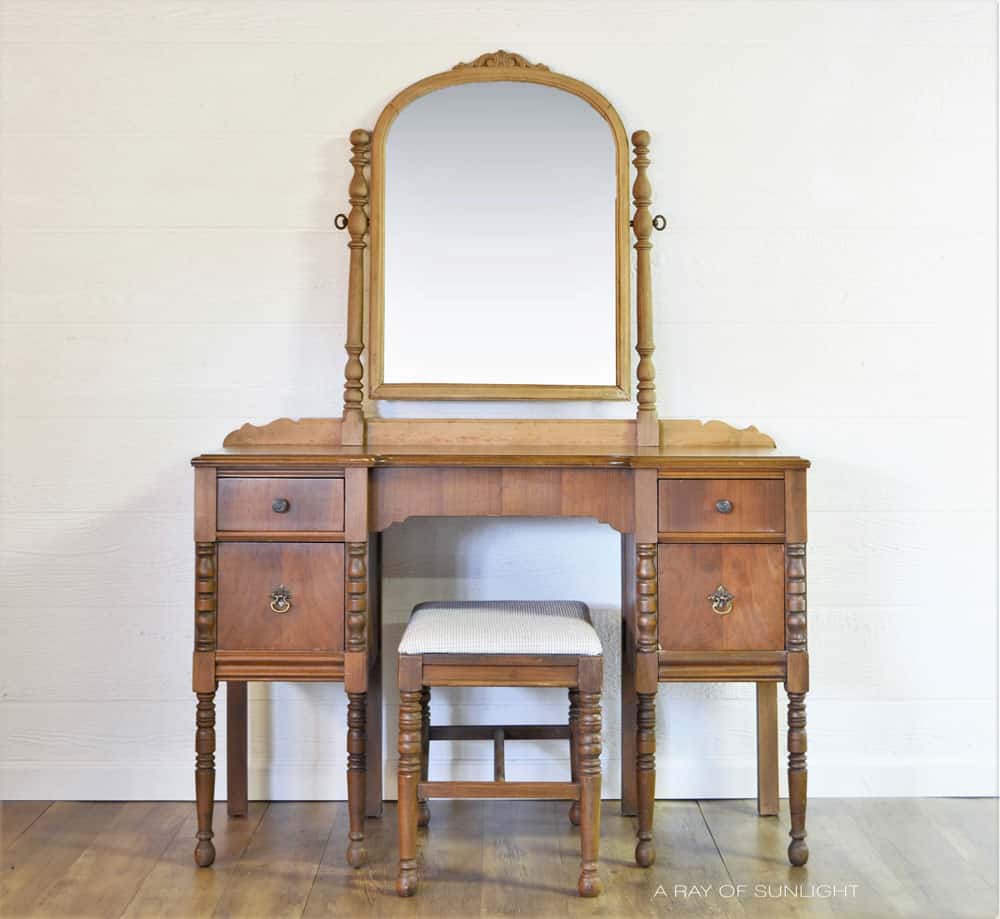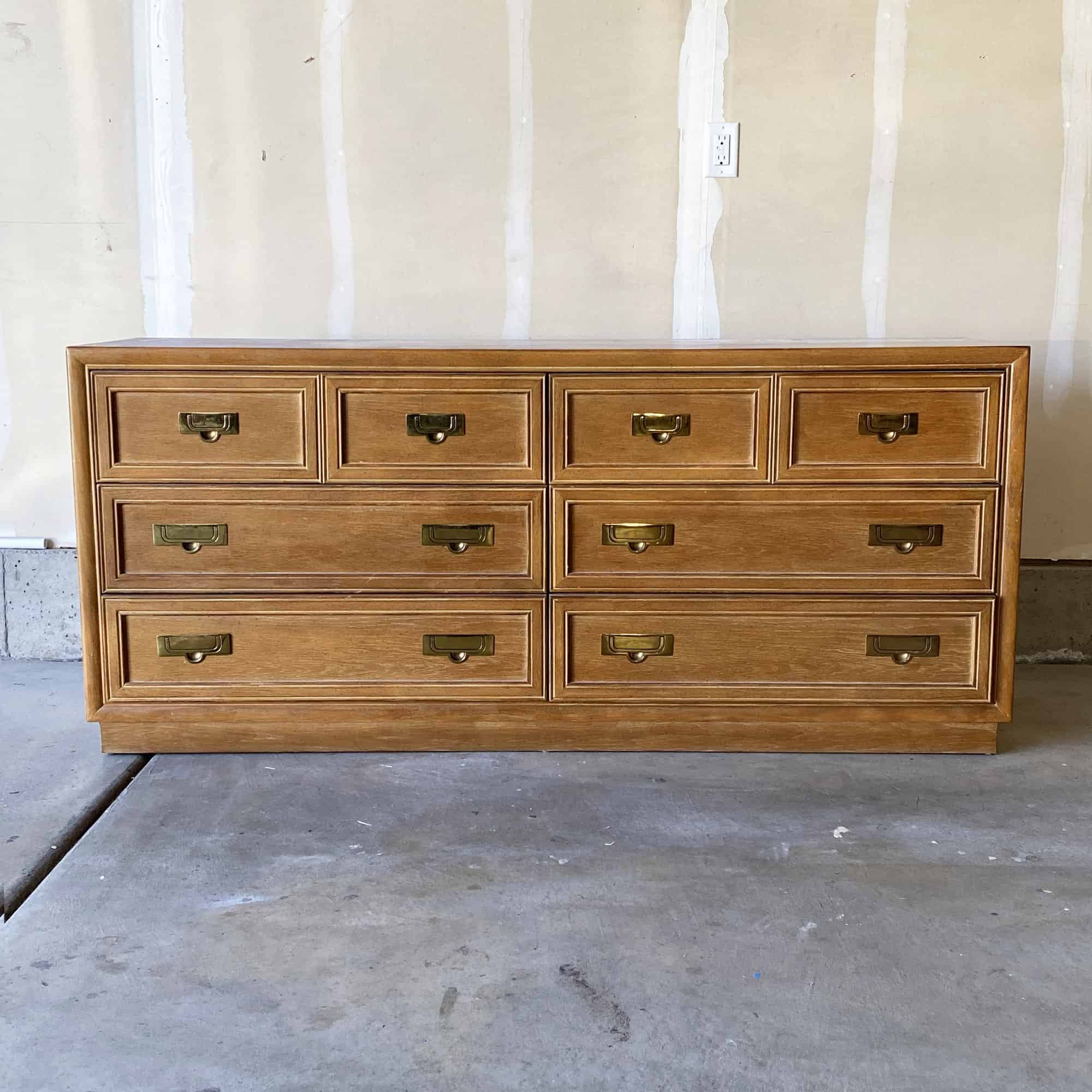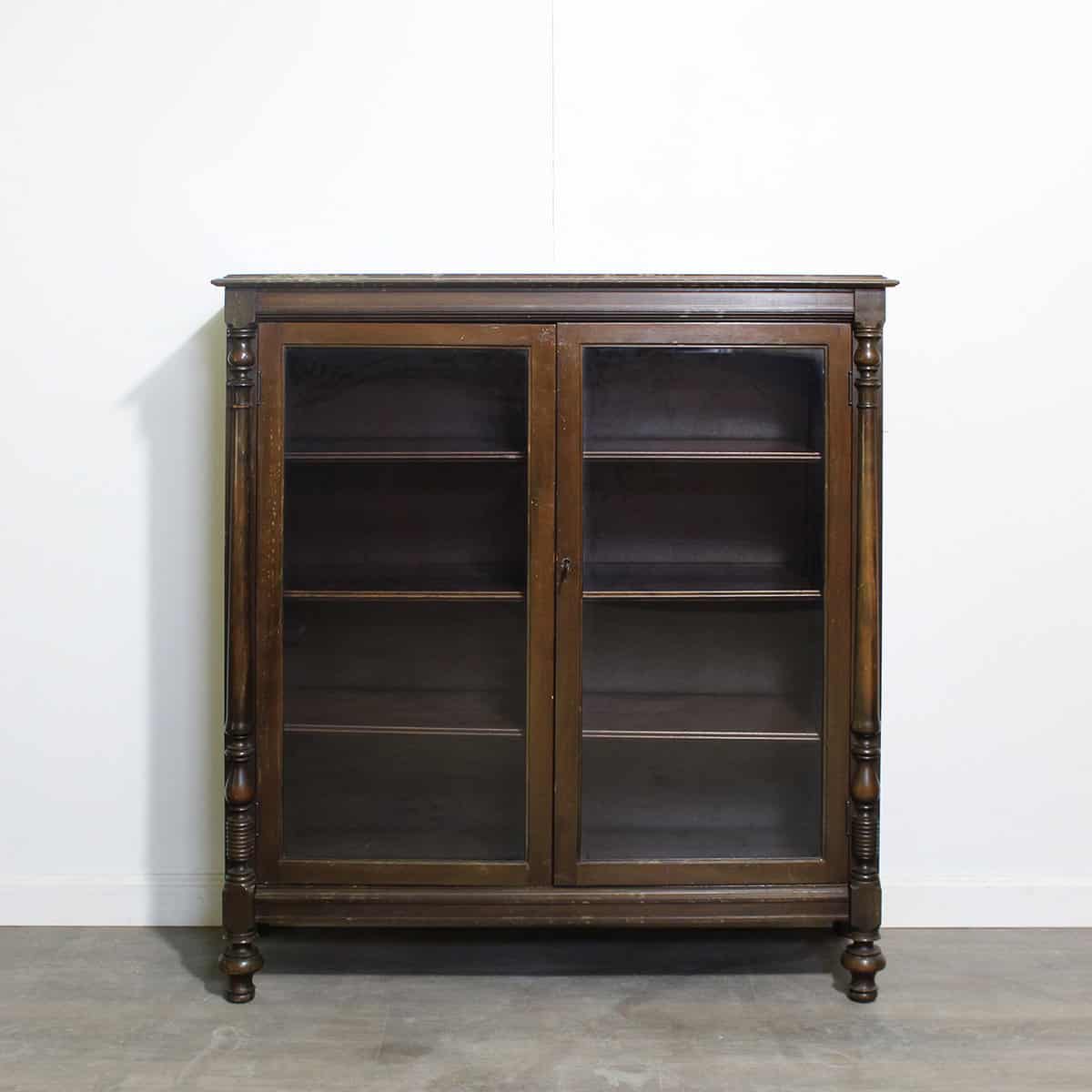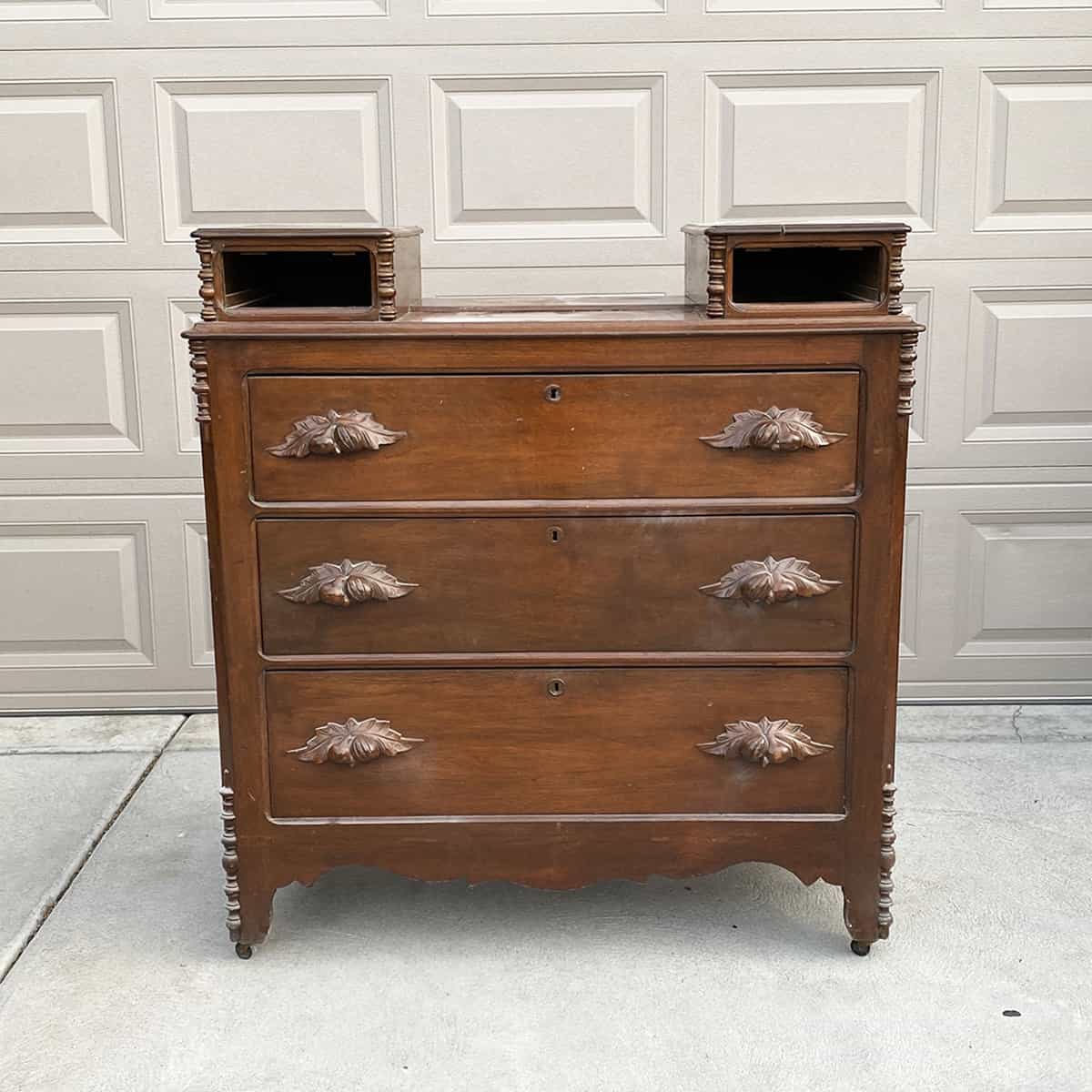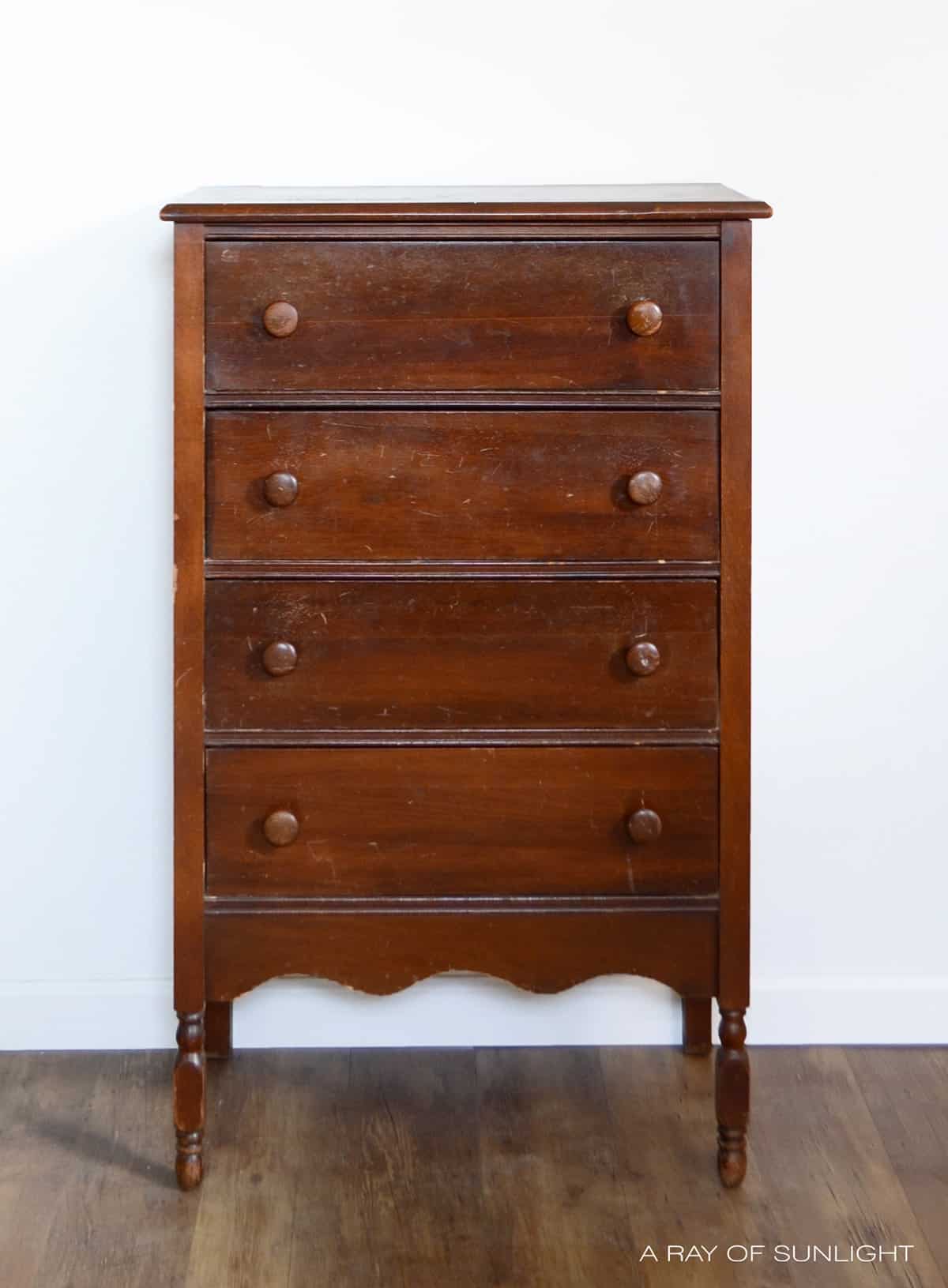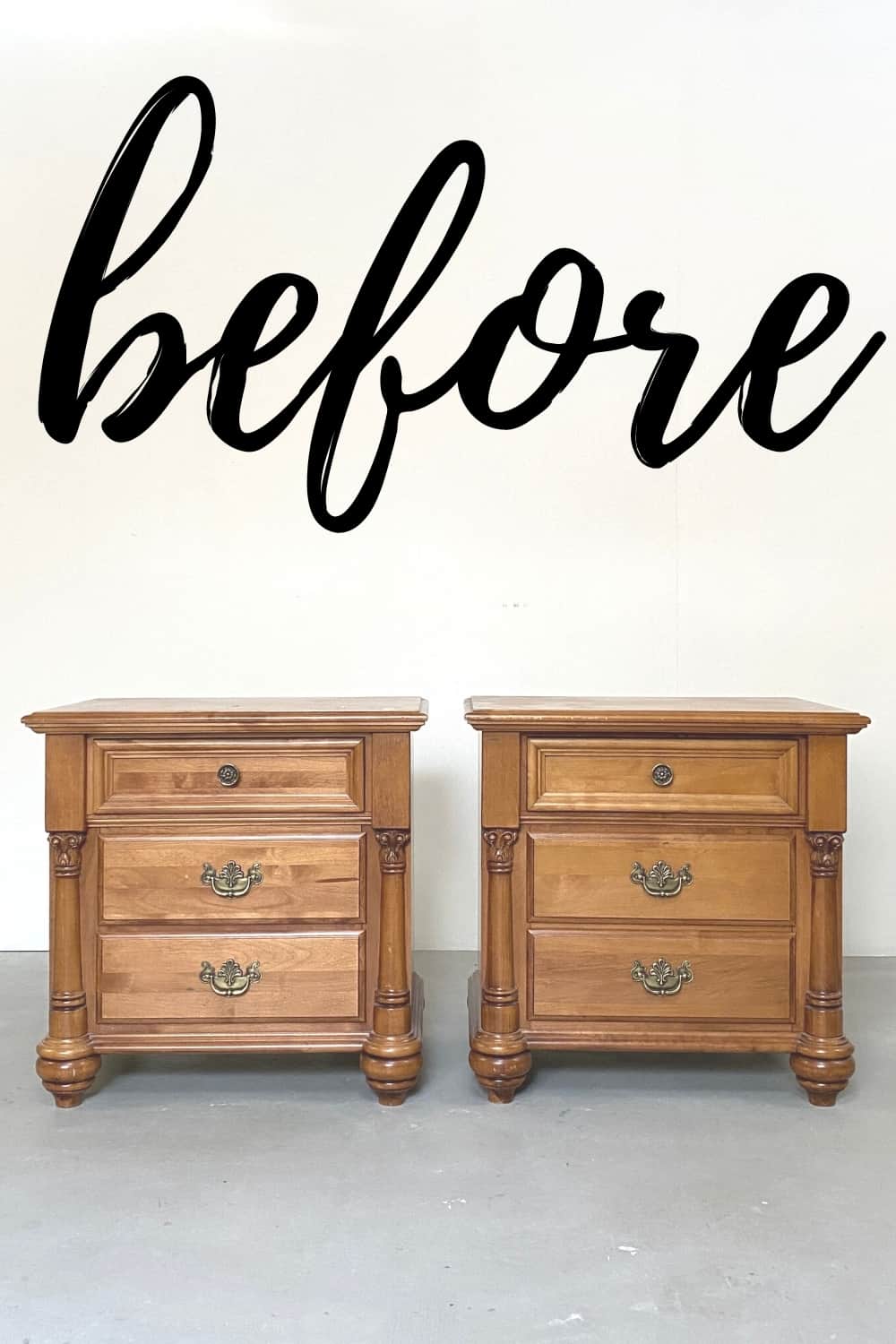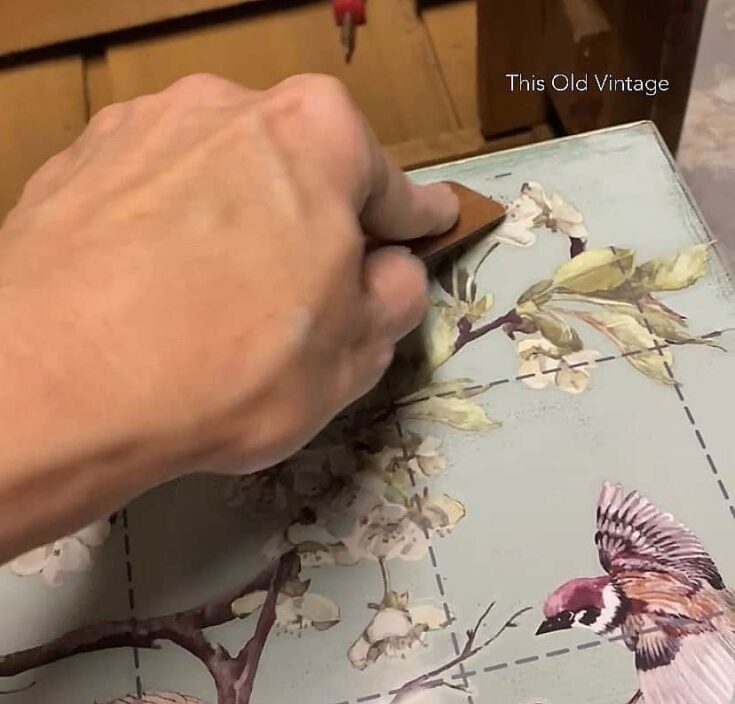How to Apply Furniture Transfers
Want to paint floral designs on your painted furniture, without all the hassle of actually painting?? Check out these super easy furniture transfers that completely transform a piece of furniture! Here’s how to apply furniture transfers!
Get more painting techniques for furniture here!
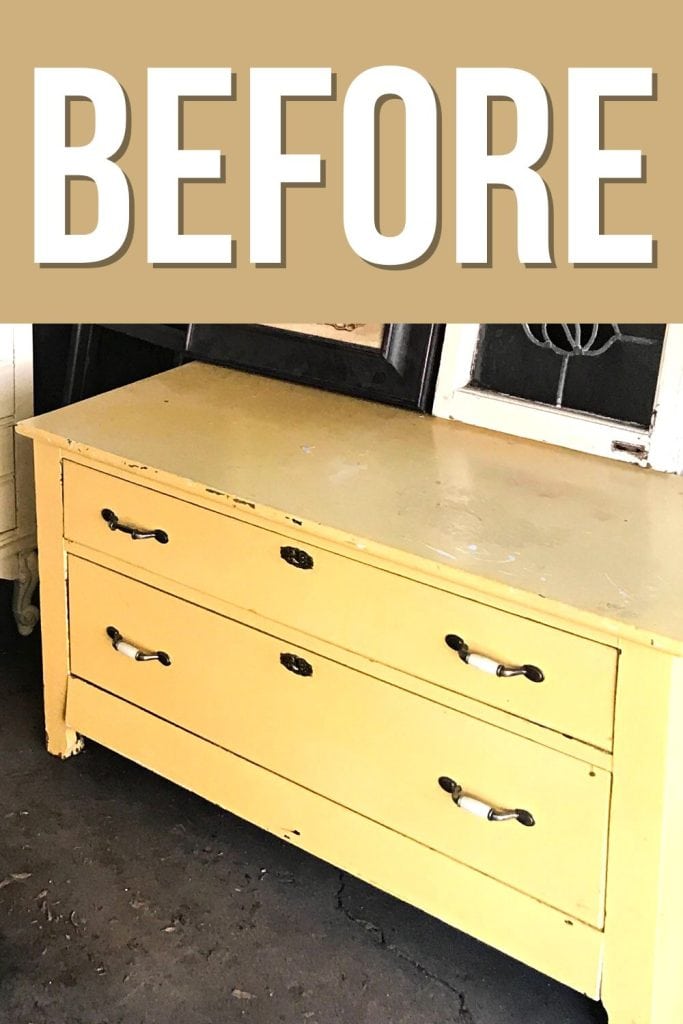
Most furniture painters shy away from previously painted pieces for fear of the unknown. With a little patience and some creativity, you can turn it into a multi-layered, one-of-a-kind gem!
Supplies Used to Apply Furniture Transfers
As an Amazon Associate, I earn from qualifying purchases. I also may earn from other qualifying purchases with other companies or get free product to review and use. All opinions are my own.
- TSP Substitute Cleaner
- Blue Shop Towels
- Electric Sander
- 150 Grit Sandpaper
- Green Chalk Paint
- Blue Chalk Paint (Seaside by Mudpaint)
- 220 Grit Sandpaper
- Redesign by Prima Furniture Transfer (Blossom Flight)
- General Finishes Flat Topcoat
- 2 Rustic Black Handles (Menard’s)
- Furniture Salve (Wise Owl Citrus Mint)
Grab our list of 10 must have painting furniture supplies too!
Prep Furniture
Since I found this yellow beauty at the curb, I cleaned it very well with the TSP substitute. Learn more about how to clean furniture before painting here.
Then I had at it with my fancy sander. I used 150 grit sandpaper because I needed to break through the yellow paint and expose some of the wood. Learn all about the best sanders for furniture here!
Now we are ready for a new layer of color.
Check out how to prepare furniture for painting to learn more.
Paint Furniture
I applied a coat of leftover green chalk paint and let that dry for about an hour.
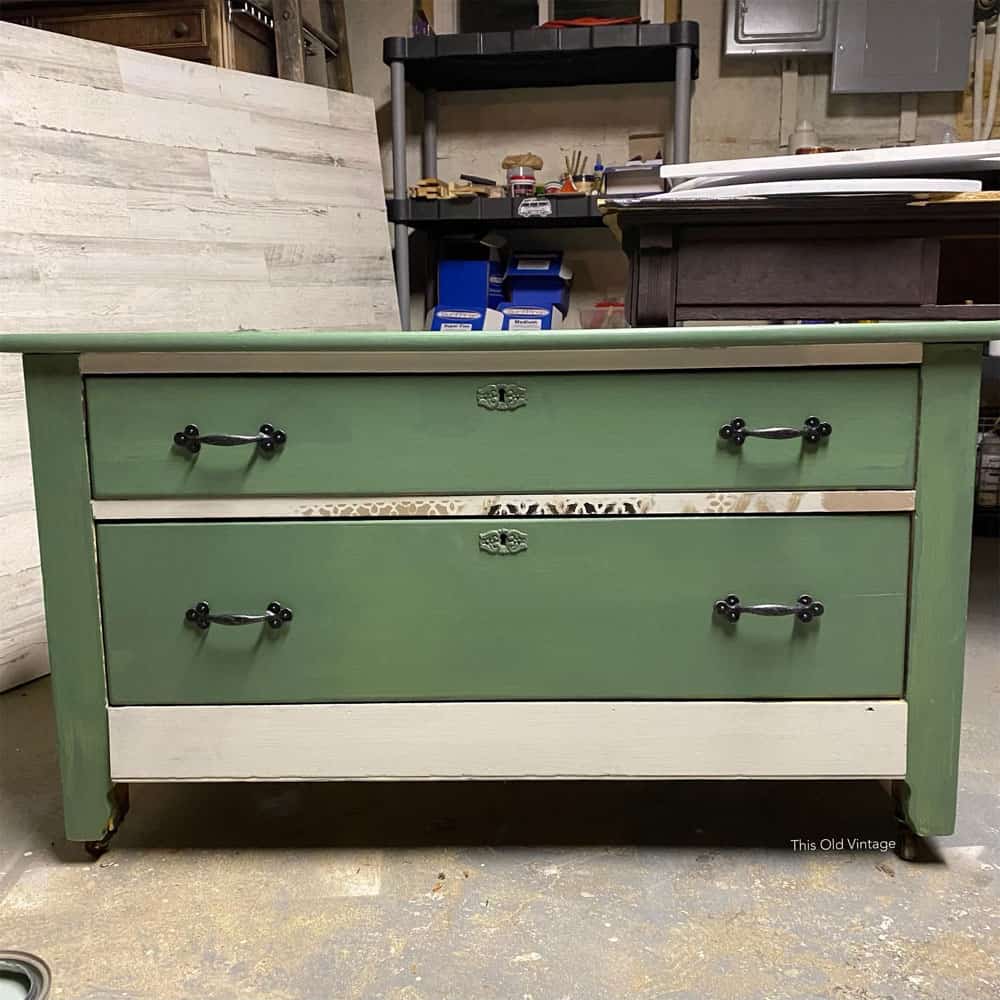
I was going to stencil a portion of this, so I painted a couple of sections white…but then changed my mind on the stenciling.
So, next, I applied a layer of blue-green paint by Mudpaint called “Seaside“.
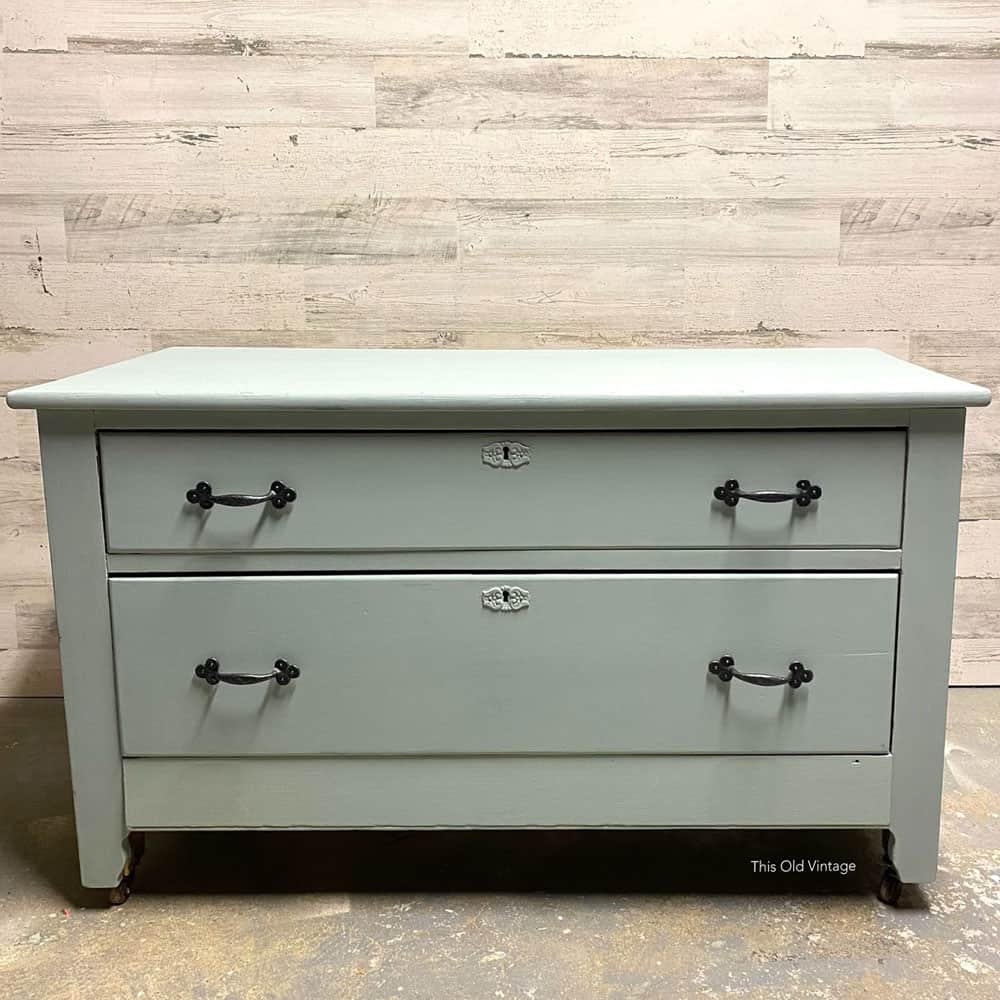
Distress Painted Furniture
After another hour of dry time, I was ready to distress.
With my fancy sander in hand and a 220 grit sandpaper, it was so easy to gently distress the blue down to the green, and with just a bit more pressure I was able to get to the “original” yellow in spots.
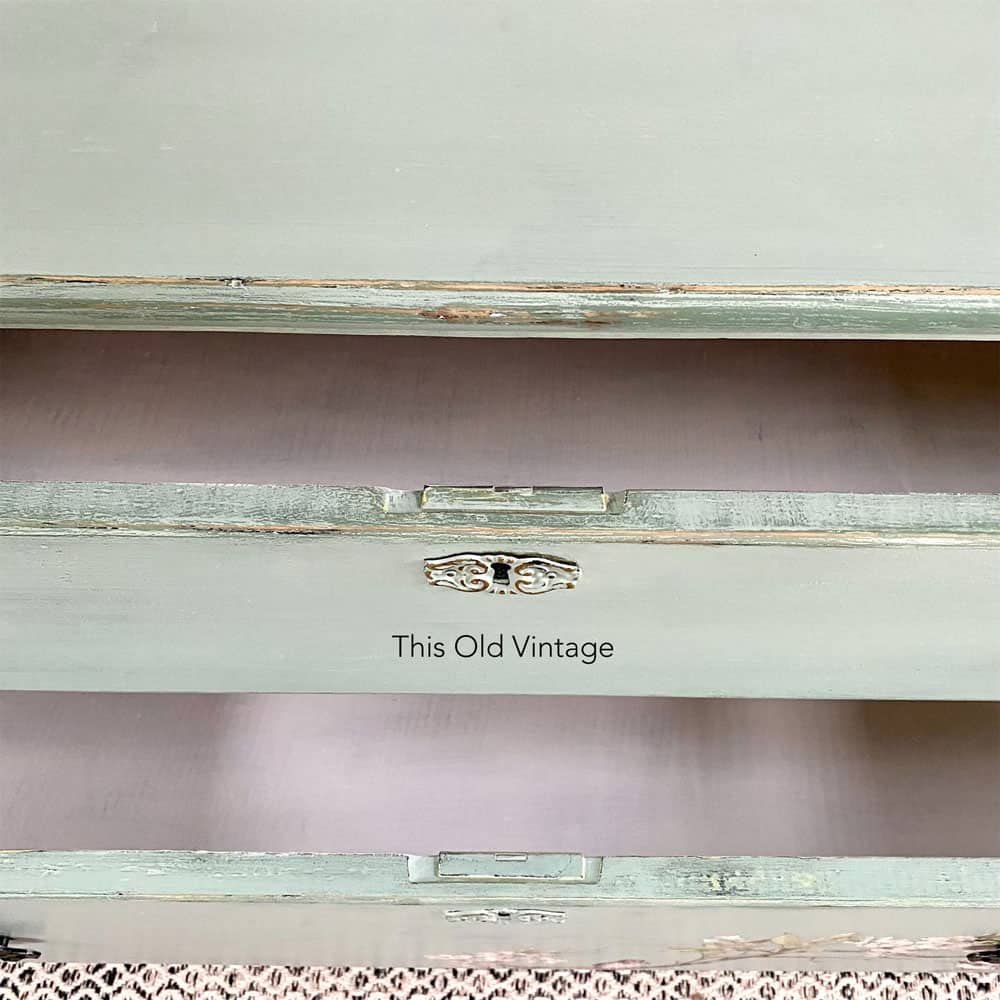
Learn more about the 6 best distressing furniture techniques here.
Apply Furniture Transfer
The hardest part of adding a furniture transfer will be deciding just where to put it and how much or how little of it to use.
My personal preference is to use them sparingly, but I’m not sure if I followed my own advice with this little lady because the birdies are definitely the star of the show!
Since I already used my sander to distress this piece all over, it was very smooth and ready for the transfer. I decided on opposing ends for my placement.
I cut out the sections I wanted and pulled off the backing and then immediately placed it onto the dresser.
How to Apply Furniture Transfers
Important to note: Once you place it down, you cannot readjust it, it’s already begun to adhere.
Also, after removing the backing take care not to let the transfer touch itself…because it will stick together. Then using the supplied wedge tool, start lightly rubbing it on.
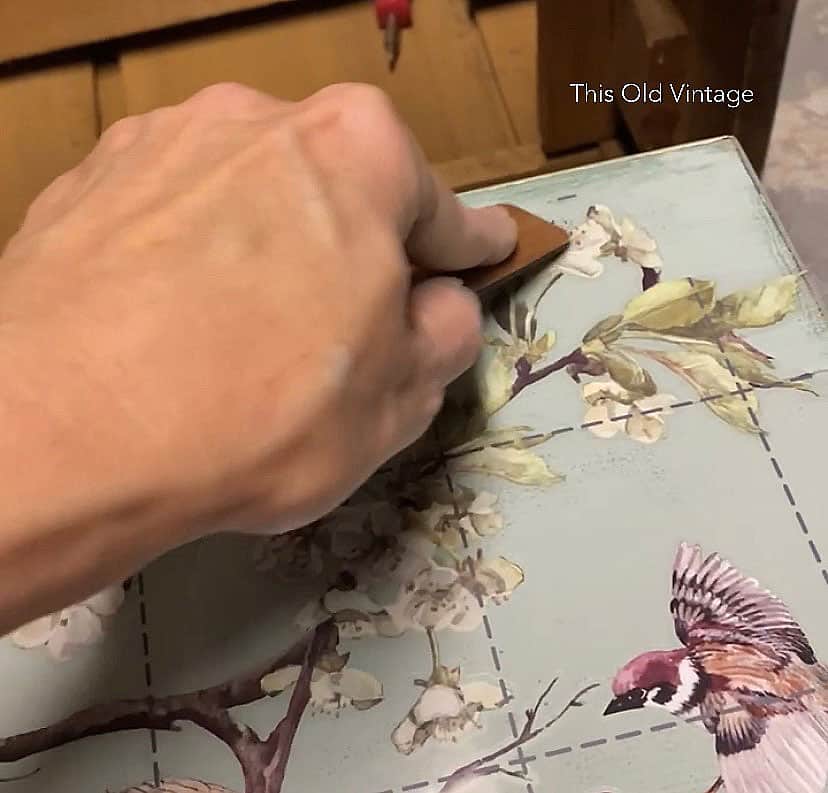
If you think you’ve got it, you can start to pull the clear sheet and your design should stick to the piece. But if you’ve missed a spot and it didn’t get rubbed onto the furniture, simply lay it back down and try again.
It usually takes a good couple of minutes to rub it on completely.
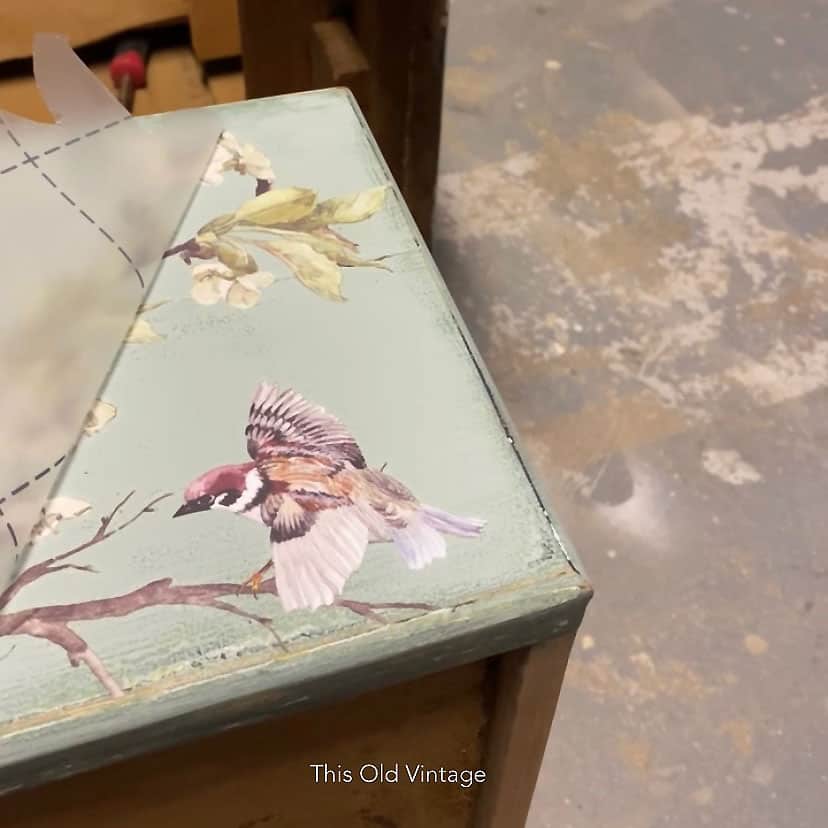
Once you have finished this step, take a piece of the backing and kind of rub that all over the transfer, as if you’re rubbing it in again. This step is called “burnishing”.
You’re just making sure that the edges have completely adhered.

((Check out this similar easy DIY teal dresser with floral pattern transfer.))
Now you are ready for your topcoat.
Apply Topcoat to Seal Transfer and Paint
I like to have dedicated brushes for just top coating. One of my favorite brushes to use for this task is the Zibra fan brush. Learn more about the best paint brushes for painting furniture here.
And since I am only using it for clear finishing, it always stays nice and clean.
I used General Finishes High-Performance Topcoat in their Flat finish and I waited the recommended time between my two coats. Learn more about the best topcoats for painting furniture here.
Now we were ready to add the new handles.
Add New Hardware
When I spotted these handles at Menards, I instantly fell in love with them and bought about 30 in total!
It’s always so much easier to use the existing holes from the original handles and that’s exactly what I did here.
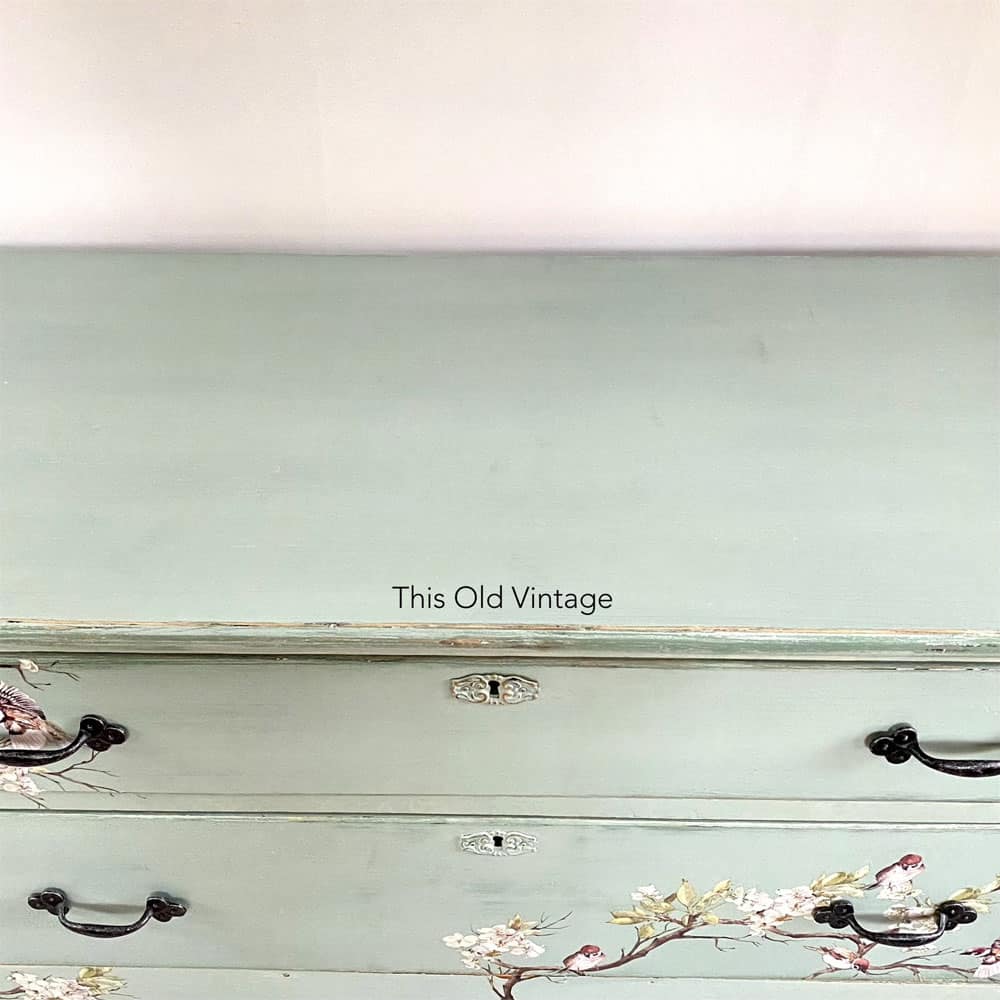
Sometimes the center spacing isn’t the most common size, so then you’ll have to hunt on Amazon since they have everything.
Refresh Furniture Interior
Now it’s time to moisturize the drawer bottoms and the interior of the cabinet. For this, I used Wise Owl’s furniture salve. It is an oil-based product and is available in a multitude of fresh scents.
I dip a thick wax brush right into the can and rub it into the dry wood surface. It will bring back the dryest, most dull wood, right back to life.
I also add this to the bottom of the drawers to help them glide better. This is not like a traditional wax – no need to wipe off. Just think of it as applying moisturizing lotion to your skin.
So now you can see this sweet little lady in all her glory. Don’t you just love those birdies? Get more floral painted furniture ideas here.
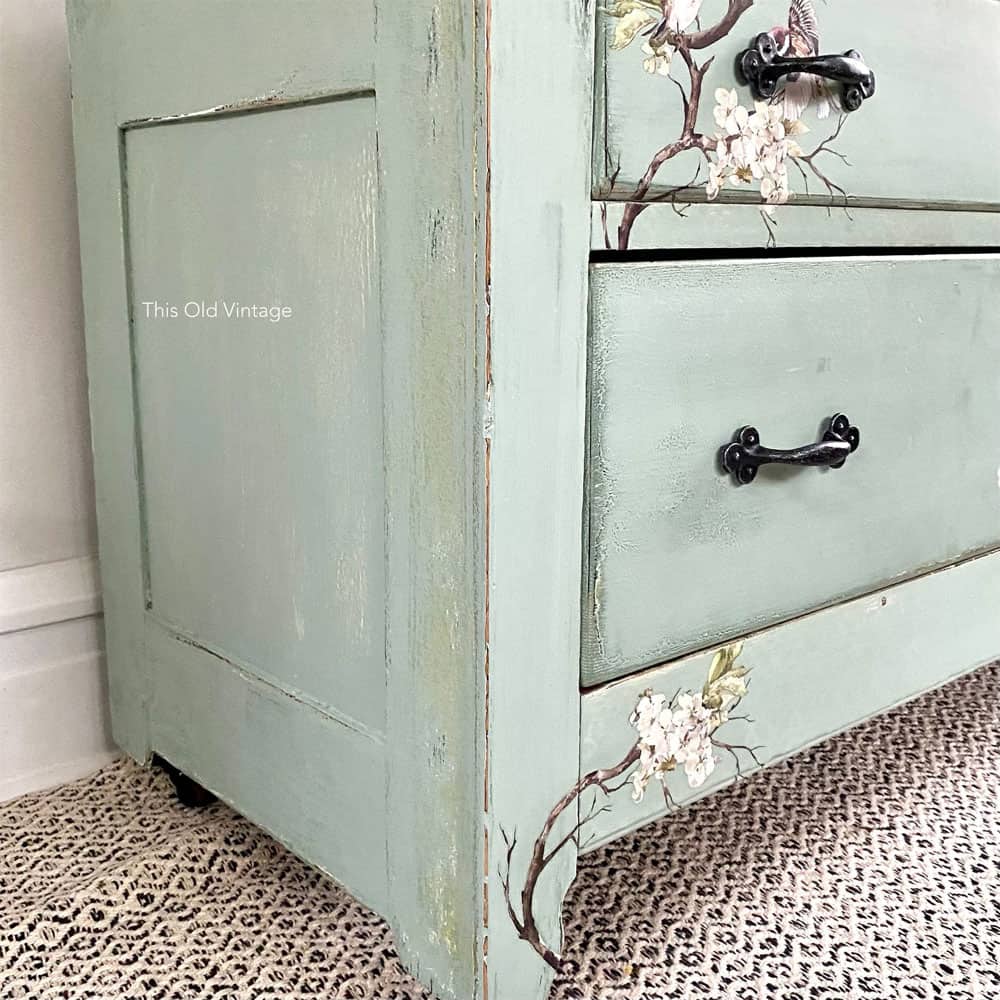

More Before And After Makeovers
Click any of these “before” photos below to view the “after” of that makeover.
This makeover was created by our guest, Donna! “Hi, my name is Donna and I am the artist behind This Old Vintage. There’s not much more I love than finding a forgotten piece of furniture and transforming it into something you can proudly display in your home for years to come. When I’m not tending to my daughter, our dog, or our bird, you’ll find me in the basement sanding, priming, or painting something wonderful. I’m not an expert but I am learning every day and am enjoying the journey.”
Go check out this piece on my Instagram and Facebook Page and give us a Like/Follow to see what’s next!
More Adding Design to Furniture Makeovers
- How to Stencil Painted Furniture
- Stenciling Furniture
- How to Stencil Without Bleeding
- How to Paint Stripes on a Wall Without Bleeding
Follow us on YouTube to get more tips for painting furniture.
Or share your project with us on our Facebook Group and be part of our community. See you there!


